Topics
Category
Era
Dayton’s
Dayton’s began as a single store at Seventh Street and Nicollet Avenue in Minneapolis in 1902. When the last Dayton family member retired from leadership in 1983, the company had stores nationwide and profits of over $240 million. It became Target Corporation in 2000.
One of America’s great retail empires was built on a foundation of Minnesota farmland. In 1881 twenty-six-year-old George Dayton came to Worthington from upstate New York to tend some troubled real estate investments. Soon he owned the local bank, a real estate investment company, many acres of farmland, and a fortune.
Searching for a place to invest that fortune, Dayton chose Minneapolis. Specifically, he settled on Nicollet Avenue real estate. He put up an office building at Sixth and Nicollet in 1892 and a still-bigger building at Seventh and Nicollet in 1902. His major tenant there was a department store called Goodfellow’s, which he soon bought. The store took the Dayton name in 1903 and kept it until 2001.
Dayton aimed to forge a bond between his store and the people of Minneapolis. He worked on three fronts: merchandising, entertainment, and civic affairs. In merchandising Dayton’s offered a vast array, from tools to high fashion. It also maintained a generous return policy. Events like flower exhibits, Christmas extravaganzas, and fashion shows brought entertainment. Dayton’s and the family supported the arts and charity, first through the Dayton Foundation (1918) and then through its 5-percent giving policy (1946).
Sales grew every year, from $600,000 in 1902 to $60 million in 1950. The downtown building(s) expanded eight times. By 1946 the original six-story corner installation had grown to three-quarters of the entire block and twelve floors.
Leadership stayed in the Dayton family. The eldest son, Draper, became store manager in 1906. A second son, Nelson, joined in 1911. When Draper Dayton died suddenly in 1923 at age forty-three, Nelson took over as store manager. He held that position until 1947. George Dayton died in 1938, at which point Nelson became president of the company.
When Nelson Dayton died in 1950, his five sons took over. The next generation faced new challenges. Dayton’s had grown steadily over fifty years, but always in the same downtown location. By now population growth was shifting to the suburbs; the Dayton brothers decided to go there, too. In 1956 they opened the nation’s first indoor shopping mall, Southdale, in Edina. Dayton’s and its longtime rival Donaldson’s were the anchor tenants. Brookdale (1966), Rosedale (1969), and Ridgedale (1974) followed.
In 1954 Dayton’s opened a store in Rochester and bought one in Sioux Falls. It moved into downtown St. Paul in 1959. It broke out of the Midwest in 1968, buying regional chains in Portland and Phoenix. In 1966 it launched B. Dalton, a bookselling line that grew to include 798 outlets at its peak (it was sold in 1986).
In 1969 Dayton’s merged with the J.L. Hudson Company of Michigan and became Dayton Hudson Corporation. Dayton Hudson bought the Brown stores of Oklahoma in 1971 and finally Mervyn’s of California in 1978. By 1979 Dayton Hudson had stores in forty-one states. The company’s profit in 1983 amounted to $243 million.
Through all these changes Dayton’s retained a loyal customer base. Twin Cities residents in particular personally identified with the store. But the Dayton’s name would not last much longer. The last Dayton brothers retired from the company in 1983.
In 1990 Dayton Hudson bought the Chicago-based Marshall Field’s stores. In 2001 all the Dayton Hudson stores became Marshall Field’s, including the flagship: the former Goodfellow’s at Seventh and Nicollet in downtown Minneapolis.
Dayton’s had started in a different direction in 1962 with its first Target store in Roseville, followed quickly by stores in St. Louis Park, Crystal, and Duluth. By 1979 Target had eighty stores and sales of over $1 billion.
By 2000 Target Division profits surpassed earnings from all other stores combined. Dayton Hudson changed its name to Target Corporation. In 2004 Target sold all of its Mervyn’s and Marshall Field’s stores. By 2015, what began as a single department store in 1902 had become a national discount empire with nearly 1800 stores.
Bibliography
Dayton, Bruce B., and Ellen B. Green. George Draper Dayton: A Man of Parts. Minneapolis: B.B. Dayton, 1997.
——— . The Birth of Target. Minneapolis: [B.B. Dayton], 2008.
Firestone, Mary. Dayton’s Department Store. Charleston, SC: Arcadia, 2007.
Leebrick, Kristal. Dayton’s: A Twin Cities Institution. Charleston, SC: History Press, 2013.
Miller, Laura J. Reluctant Capitalists: Bookselling and the Culture of Consumption. Chicago: University of Chicago Press, 2006.
Related Resources
Primary
Album 277
Dayton, Donald C., comp. A History of Dayton’s in Pictures, 1902–1946.
Description: An album of professional-quality photos of Dayton’s store and operations, early twentieth century. Minnesota Historical Society.
George D. Dayton research files, 1992–1997
Manuscript Collection, Minnesota Historical Society, St. Paul
http://www2.mnhs.org/library/findaids/P2374.xml
Description: Notes and references, photographs, correspondence and memoranda, photocopies of newspaper articles, and miscellaneous printed items generated in researching and writing a biography of Worthington banker and Minneapolis retail merchant George Draper Dayton. The materials were created or collected by co-authors Bruce B. Dayton and Ellen B. Green.
Secondary
Dayton, Bruce B., and Ellen B. Green. The Long Pull: The Life of G. Nelson Dayton. Minneapolis: Privately published, 2013.
DeLong, Marilyn Revel, ed. Minnesota Creates: Fashion for a Century. St. Paul: Goldstein Museum of Design, University of Minnesota, 2000.
Heim, Rosemary L. Dayton’s Presents: The History of Dayton’s. [Minneapolis]: DHC, 1991.
Mahoney, Tom, and Leonard Sloane. The Great Merchants: America’s Foremost Retail Institutions and the People Who Made Them Great. New York: Harper & Row, 1974.
Web
Target through the years.
https://corporate.target.com/about/history/Target-through-the-years
Related Audio
MN90: Dayton’s Department Store
All rights reserved
More Information
Articles
Related Images
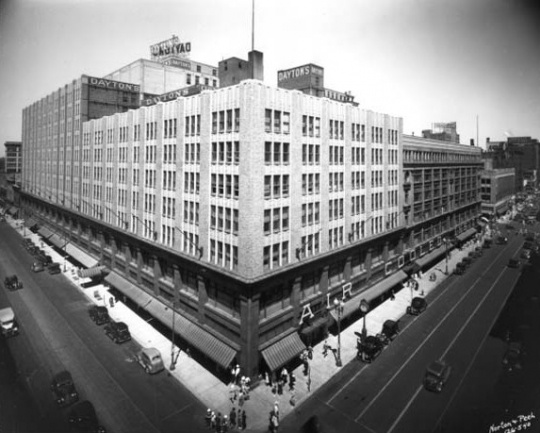
Dayton’s, Minneapolis
Holding Location
More Information
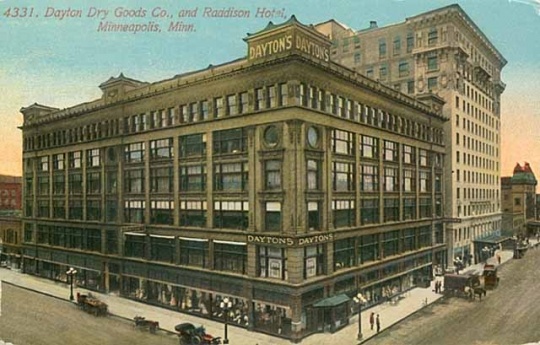
The Dayton Company
Public domain
Holding Location
Articles
More Information
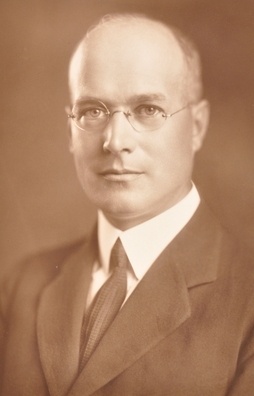
David Draper Dayton
Public domain
Holding Location
Articles
More Information
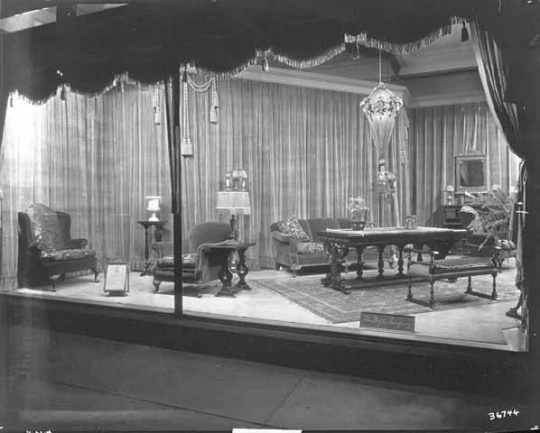
Furniture in window display
Public domain
Holding Location
Articles
More Information
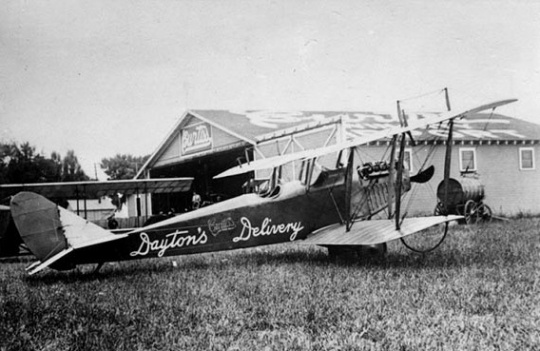
Dayton’s Dry Goods Plane
Public domain
Holding Location
Articles
More Information
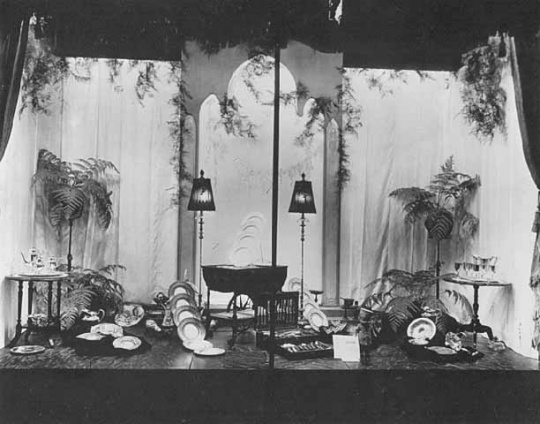
Dayton’s Window Display
Holding Location
Articles
More Information
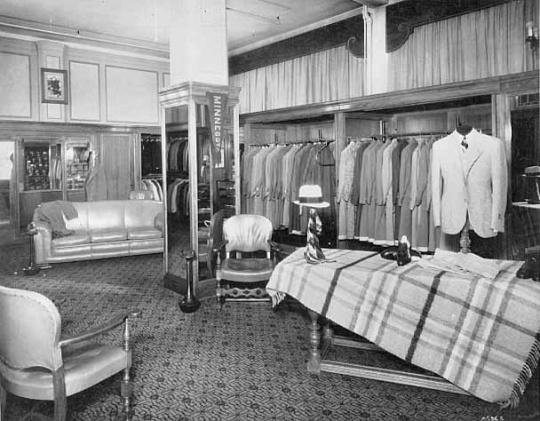
Dayton’s Men’s Department
Holding Location
Articles
More Information
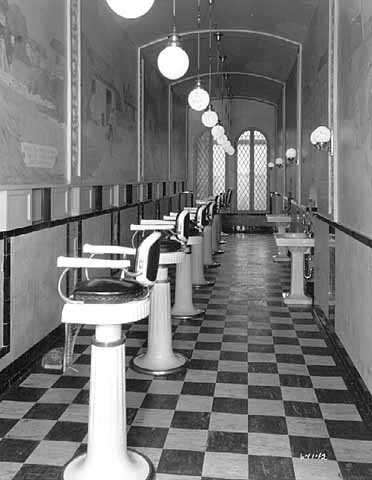
Children’s Barber Shop, Dayton’s
Holding Location
Articles
More Information
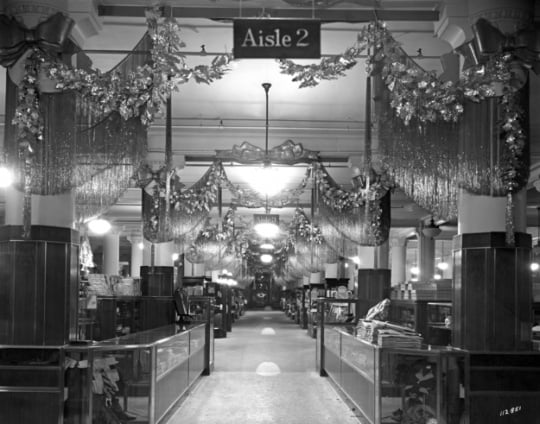
Main floor decorated for Christmas, Dayton’s
Holding Location
Articles
More Information
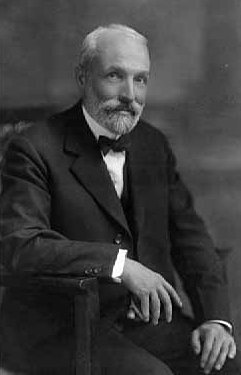
George Draper Dayton
Holding Location
Articles
More Information
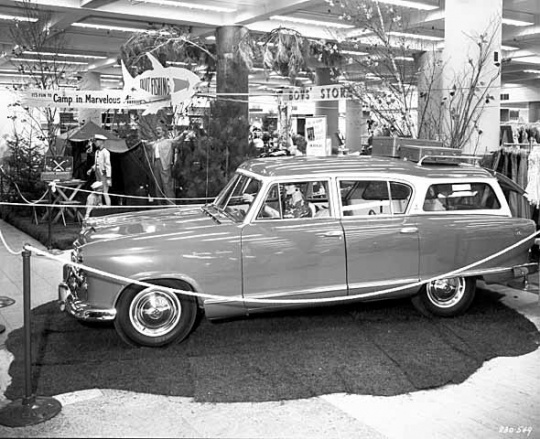
Marvelous Minnesota Display
Holding Location
Articles
More Information
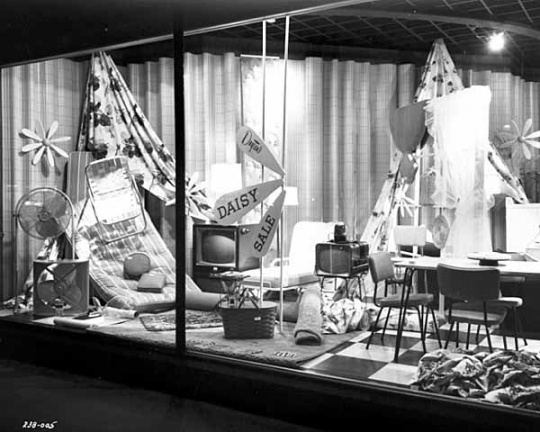
Daisy sale window display
Holding Location
Articles
More Information
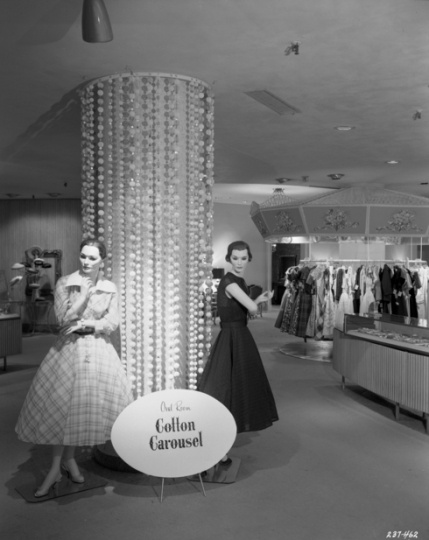
Oval Room, Dayton’s
Holding Location
Articles
More Information
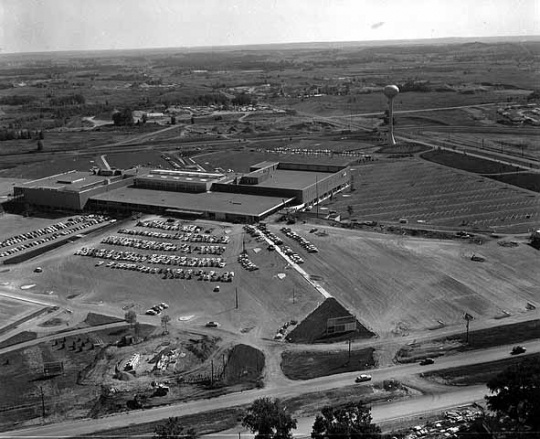
Southdale, Edina
Southdale, Edina. Photographer: Minneapolis Star Journal Tribune, 8/14/1956.
All rights reserved
Holding Location
Articles
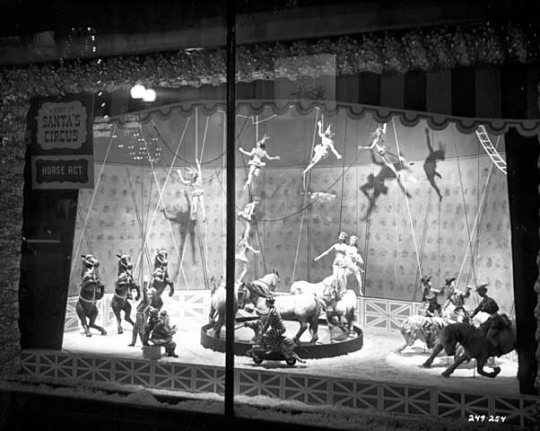
Santa’s Circus show window
Holding Location
Articles
More Information
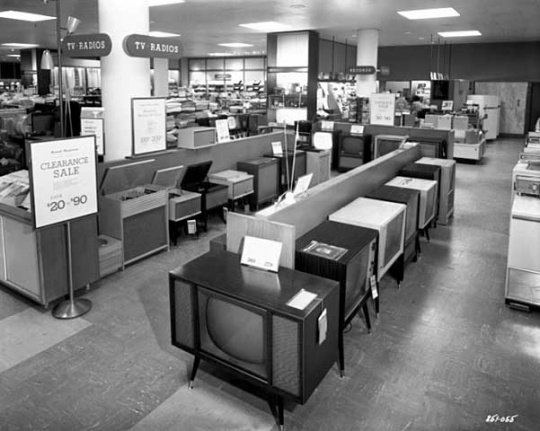
Electronics Department
Holding Location
Articles
More Information
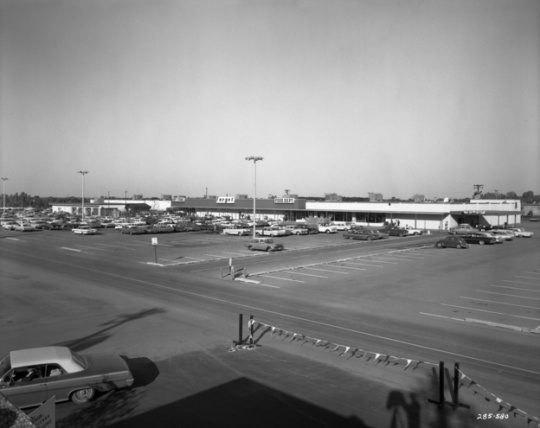
Target store, Roseville
Holding Location
Articles
More Information
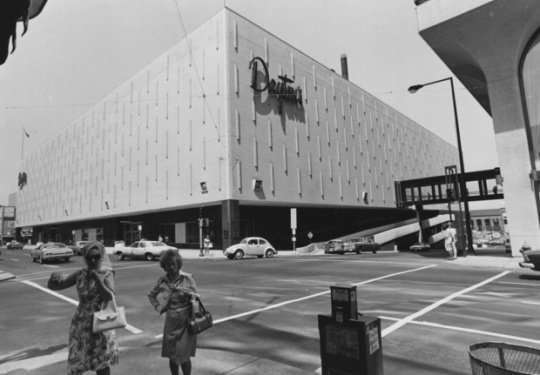
Dayton’s, St. Paul
Holding Location
Articles
More Information
Related Articles
Turning Point
In March 1954 Dayton’s opens a store in Rochester—its first outside of Minneapolis and an initial step on the path to a nationwide expansion. By 1979 it has stores in forty-one states.
Chronology
1857
1881
1890
1902
1906
1923
1938
1950
1956
1962
1969
1978
1990
2000
2004
Bibliography
Dayton, Bruce B., and Ellen B. Green. George Draper Dayton: A Man of Parts. Minneapolis: B.B. Dayton, 1997.
——— . The Birth of Target. Minneapolis: [B.B. Dayton], 2008.
Firestone, Mary. Dayton’s Department Store. Charleston, SC: Arcadia, 2007.
Leebrick, Kristal. Dayton’s: A Twin Cities Institution. Charleston, SC: History Press, 2013.
Miller, Laura J. Reluctant Capitalists: Bookselling and the Culture of Consumption. Chicago: University of Chicago Press, 2006.
Related Resources
Primary
Album 277
Dayton, Donald C., comp. A History of Dayton’s in Pictures, 1902–1946.
Description: An album of professional-quality photos of Dayton’s store and operations, early twentieth century. Minnesota Historical Society.
George D. Dayton research files, 1992–1997
Manuscript Collection, Minnesota Historical Society, St. Paul
http://www2.mnhs.org/library/findaids/P2374.xml
Description: Notes and references, photographs, correspondence and memoranda, photocopies of newspaper articles, and miscellaneous printed items generated in researching and writing a biography of Worthington banker and Minneapolis retail merchant George Draper Dayton. The materials were created or collected by co-authors Bruce B. Dayton and Ellen B. Green.
Secondary
Dayton, Bruce B., and Ellen B. Green. The Long Pull: The Life of G. Nelson Dayton. Minneapolis: Privately published, 2013.
DeLong, Marilyn Revel, ed. Minnesota Creates: Fashion for a Century. St. Paul: Goldstein Museum of Design, University of Minnesota, 2000.
Heim, Rosemary L. Dayton’s Presents: The History of Dayton’s. [Minneapolis]: DHC, 1991.
Mahoney, Tom, and Leonard Sloane. The Great Merchants: America’s Foremost Retail Institutions and the People Who Made Them Great. New York: Harper & Row, 1974.
Web
Target through the years.
https://corporate.target.com/about/history/Target-through-the-years



















